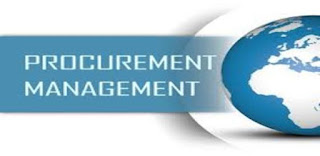5 Ways To Improve Procurement Efficiency

Employees are constantly worried about job security, mainly because when they hear financial troubles are brewing, the only way they know to be the fastest cost cutting exercise is to let staff go.
It’s a worrying concern for employers too because it leads to low staff morale. For that reason, when budgets are being tightened, it’s imperative to get staff aboard so they know there are steps being implemented to save jobs, which are often front line positions and imperative to business growth.
5 Things Businesses Can Do To Improve Procurement Efficiency
1. Have monthly board level involvement
MDs rely on their teams to be ensuring efficiencies are happening, however, at board level, procurement should always be visited. Best practice would be monthly because there’s always going to be somewhere with a high expense becoming worrisome.
For procurement teams and finance departments, some can feel as though they are on their own to deliver results.
When they can get board level involvement and support where applicable, they can then work with seniors and executives across all departments to ensure they are focused on priority issues. Priorities can change rapidly, which is why board level involvement on a monthly basis will help identify category risks, ensuring faster response times to addressing cost cutting opportunities.
2. Encourage staff to improve work efficiency
There’s been many a survey completed to establish how employees feel about job security and you’ll know from each of them, it’s not good. Many feel their jobs are at risk, even if the company is sailing along with plenty of capital.
Employees know that it takes money to keep your business operational. What they don’t know is everything they can be doing to make their work more cost efficient.
It could be as simple as turning off computers when at lunch and looking up telephone contact details online, rather than dialling a directory service at premium rate numbers.
Whatever employees can do to lower the cost to your business, the majority will be happy to oblige.
3. Put clear objectives in place for your procurement strategy
These days, procurement activities need to be strategised because of the expense involved. It’s not unusual for 50% of expenditure in procurement. You can be tactical about it but you’ll see better results with a clear strategy in place.
The best case scenario is when your finance team can obtain key finance information for transactions with only a few mouse clicks. Much of the buying process is now technology driven, with cloud services lending a major hand towards automation of frequent tasks.
If something can be automated, do that. If it can’t, improve efficiencies to ensure procedures aren’t too labour intensive, which become costly fast.
The best procurement strategies anticipate changes, and have adaptive supply chains so they can quickly react to circumstances that could disrupt logistics, putting merchandise and revenue at risk when supply can’t reach stores and offices.
4. Give sales reps on site time
Years ago it was common practice to employ sales reps, pay them a minimum salary with a commission per sale paid as a performance bonus. It’s still used, but these days those reps are not out consistently selling. They are in-house, viewing the product lines, reading over technical information and receiving training on the products they’re paid to promote.
You can’t expect your front line sales team to perform excellently when they aren’t familiar with what you do. A one-day training exercise doesn’t cut it. Every sector is far too competitive. This goes back around to #2 above – get your employees aboard.
5. Always be monitoring risks
Risks are everywhere. You never know when they’ll strike but when you do, you must be on top of it and fast.
Risks can come from manufacturers failing to meet production targets, disruptions to logistics operations, retailer disruptions if stores can’t be opened for whatever reason, and also from customers reflecting poor experiences of doing business with your company, for which there are some firms now employing reputation management teams to monitor social media and also extend their customer service to third party platforms to mitigate risks posed by customers. If your company is outsourcing to a reputation management service then you need to work that into your procurement strategy too, ensuring you get best value.
Every supplier has costs and those that must be managed.
No matter how efficient you feel your business or department is operating, chances are, when you look deeper, there’s going to be cost saving opportunities somewhere.

